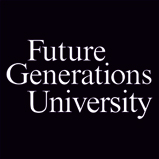All of us are immersed in the natural world. We might reside near a park and be roused in the morning by a singing bird, or awaken on the 26th floor in a structure built of concrete and steel where we are be surrounded by designs and colors inspired by nature. Pictures on the wall inside might harken to the world outside.
 |
| Blue monkey at the rim of the Ngorogor Crater in Tanzania |
When one notices the natural world, whether in one’s own compound or further afield, it triggers curiosity. A fleeting glimpse of a flower or catching a snatch of bird song can raise the question: what is that flower, or what bird sings? After repeatedly noticing and recognizing individuals, it is natural that one puzzles over the question: how does such a flower or bird comes to be present here? Then, as a familiarity with nature increases, one’s thinking may expand to consider the framework, the bigger picture, of how several species interacting together form a community and what environmental factors govern such groupings.
An interest in nature, once started, is an ever-expanding realm of discovery – whether it be in nearby parks or exploring in distant lands. Travel is one vehicle that broadens horizons, takes us out of the familiar, and gives us the opportunity to connect with other people and to encounter new species. Thinking about nature around the world may lead to the realization that we all live in one biosphere on this one rather small globe in which the parameters for our survival are remarkably narrow. Thus for the sake of that flower or that bird, or indeed our own futures, we need to be caretakers of our environment. It is no accident that Future Generations University offers a master’s degree in Applied Community Change with Conservation. If we are to leave a better world for future generations, stewardship of our natural world is essential.
 |
| Gull on the Oregon coast |
Some thoughts on the usage of the term “natural history”:
At the present time the use of “natural history” has fallen out of favor. The term is very old fashioned. Very 1800s. The American Museum of Natural History, for example, was founded in NYC in 1869 and the British Museum (Natural History) in London in 1881. These days one does not study natural history but majors in fields such as ecology, biogeography, ethology, zoology, plant genetics, or other disciplines.
Yet “natural history” is a useful term and I find it hard to locate a suitable replacement, an umbrella that connotes an all-encompassing look at our world. One might use the terms nature, nature conservation, the natural world, or the world’s flora and fauna. Nothing, though, quite replaces natural history and I have circled back to using this as a good way to indicate an overall summary of our natural world.
Dr. Robert Fleming is a Professor of Natural History at Future Generations University. This is his first in a series of articles about the natural world.
Researchers Find Encouraging Changes in Mt. Everest’s Gama Valley
Researchers Find Encouraging Changes in Mt. Everest’s Gama Valley
 |
| Yak relax in the setting sun with Mt. Everest in the background. |
 |
| The Researchers in front of a map displaying Gama Valley trekking routes. |
In accordance with the QNNP’s master plan, official trekking packages are now being offered in partnership between park authorities and local guides ensuring that good and equitable pricing practices are being adhered to. Designated trekking routes have been created with fixed camping sites, lowering the environmental damage, while maximizing the economic opportunities for local communities. Chinese tourists are now visiting the QNNP by the thousands each year. The park’s simultaneous mandates to preserve natural beauty and create economic opportunity are introducing new challenges for local communities such as trash collection and logistics management. Despite these challenges, the team was excited to find that both flora and fauna are increasing. Now back on North Mountain, the researchers are developing responses to the problems caused by overuse.
